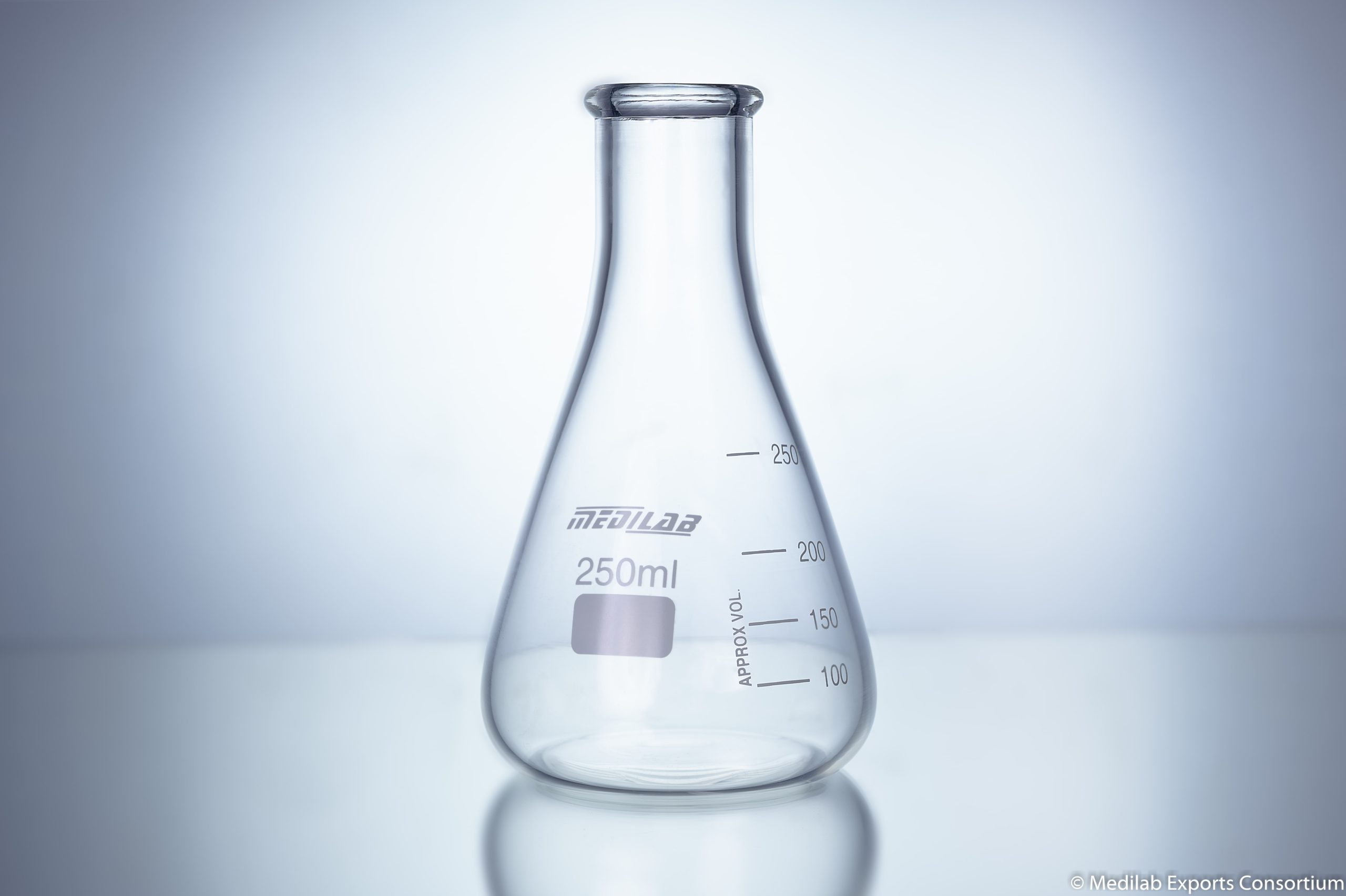Laboratory glass flasks are the backbone of scientific experimentation, offering versatility, precision, and reliability in various research settings. From Erlenmeyer flasks to volumetric flasks, each type serves a unique purpose, contributing to accurate measurements, reactions, and sample storage.
Types of Laboratory Glass Flasks and Their Uses:
Erlenmeyer Flasks
Erlenmeyer flasks, characterized by their conical shape and narrow neck, are popular for:
- Mixing solutions
- Conducting reactions
- Culturing microorganisms
Their design allows for efficient swirling and minimal risk of spills, making them indispensable in chemistry labs worldwide.
Round-Bottom Flasks
Round-bottom flasks, with their spherical body and elongated neck, are ideal for:
- Distillation
- Reflux
- Heating under vacuum
Their shape promotes even heating and prevents splashes during boiling, crucial for delicate reactions and synthesis processes.
Volumetric Flasks
Volumetric flasks, marked with precise volume graduations, ensure accurate:
- Solution preparation
- Dilution
Widely used in analytical chemistry and pharmaceutical industries, these flasks maintain strict volume tolerances, crucial for achieving reliable results in quantitative analysis.
Separatory Funnels
Separatory funnels, equipped with a stopcock at the bottom, facilitate:
- Liquid-liquid extractions
- Phase separations
Their tapered design allows for efficient pouring and ensures minimal mixing between immiscible liquids, essential for isolating compounds in organic chemistry.
Other Specialized Flasks
Additional flask types cater to specific experimental requirements:
- Boiling Flasks – Used for heating substances at high temperatures.
- Filtering Flasks – Designed with a sidearm for vacuum filtration.
- Reaction Flasks – Engineered for controlled chemical reactions.
Best Practices for Handling Laboratory Glass Flasks:-
Proper handling and care are paramount to ensure longevity and accuracy. Follow these best practices:
Inspection and Cleaning
- Always inspect flasks for cracks, chips, or scratches before use.
- Compromised glassware may lead to inaccurate measurements or hazardous situations.
- Clean flasks thoroughly after each use with appropriate detergents and solvents to remove residues and contaminants effectively.
Preventing Thermal Shock
- Gradually increase or decrease temperatures to avoid fractures.
- Use appropriate heating sources such as hot plates or water baths equipped with thermal insulation.
Safety Precautions
- When using glass flasks for reactions involving hazardous chemicals or high pressures, adhere to safety protocols.
- Utilize appropriate protective equipment, including gloves, goggles, and lab coats.
- Consider secondary containment measures to mitigate the risks of spills or accidents.
The Importance of Volumetric Flasks in Analytical Chemistry:-
Volumetric flasks, distinguished by their narrow neck and precise volume graduations, play a pivotal role in:
- Analytical chemistry
- Pharmaceutical industries
- Research laboratories
The design ensures minimal evaporation and loss of solution during transfer, enabling scientists to achieve reproducible concentrations with minimal margin of error. Each volumetric flask undergoes meticulous calibration to adhere to strict tolerance standards, ensuring consistency and accuracy across measurements.
Conclusion:-
Laboratory glass flasks are indispensable tools in scientific research, offering precision, reliability, and versatility across diverse disciplines. By understanding the types, uses, and best practices associated with these essential instruments, scientists can optimize their experimental workflows, achieve accurate results, and advance knowledge in their respective fields.



